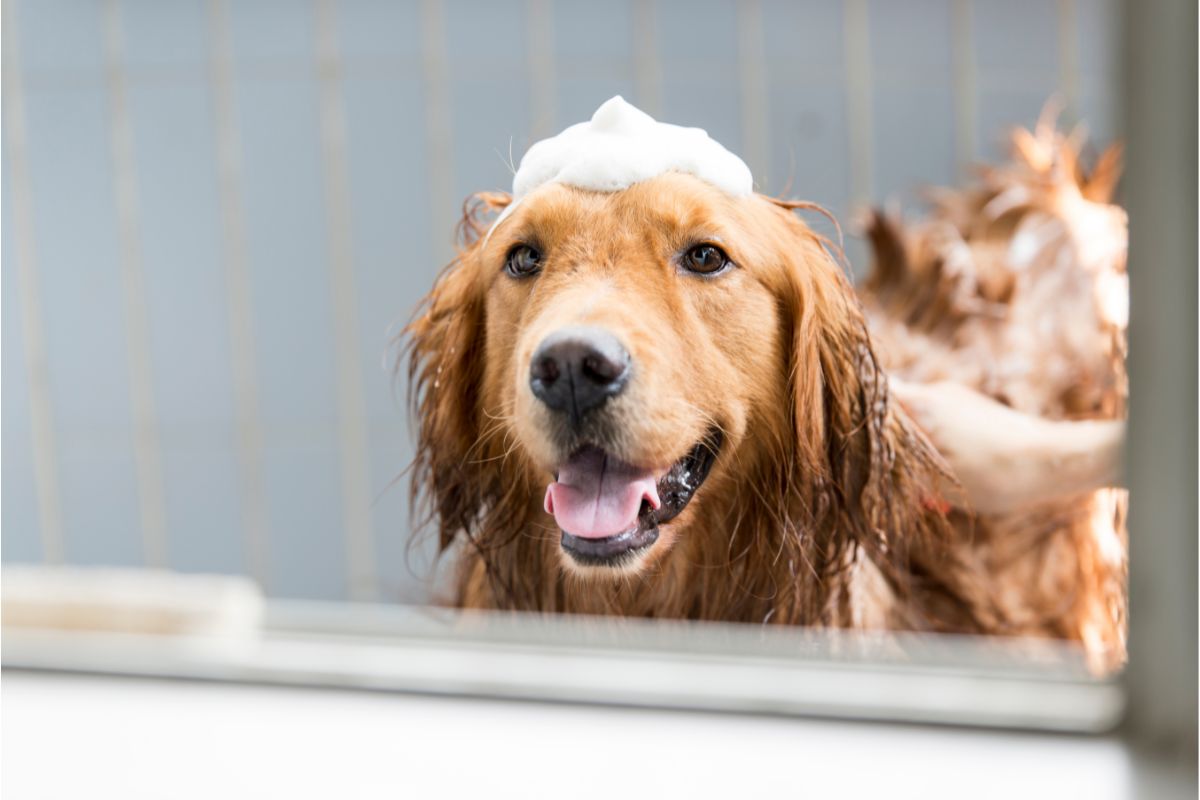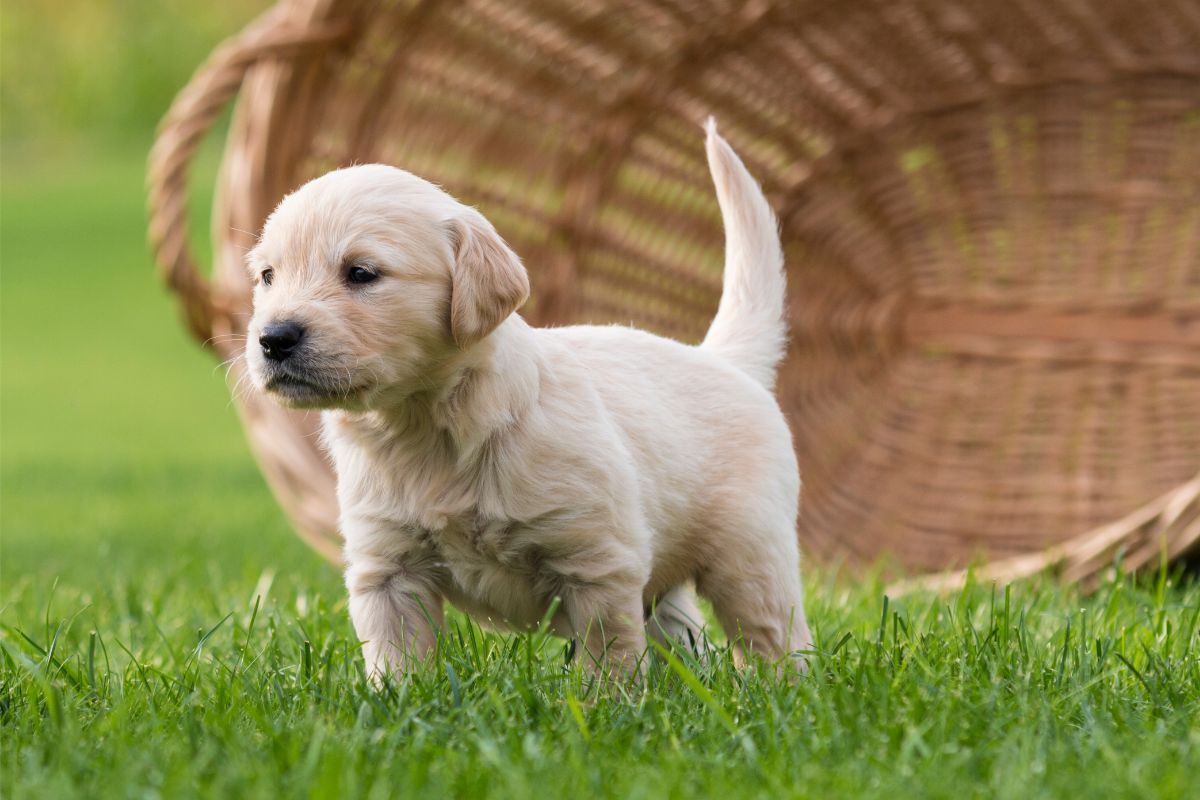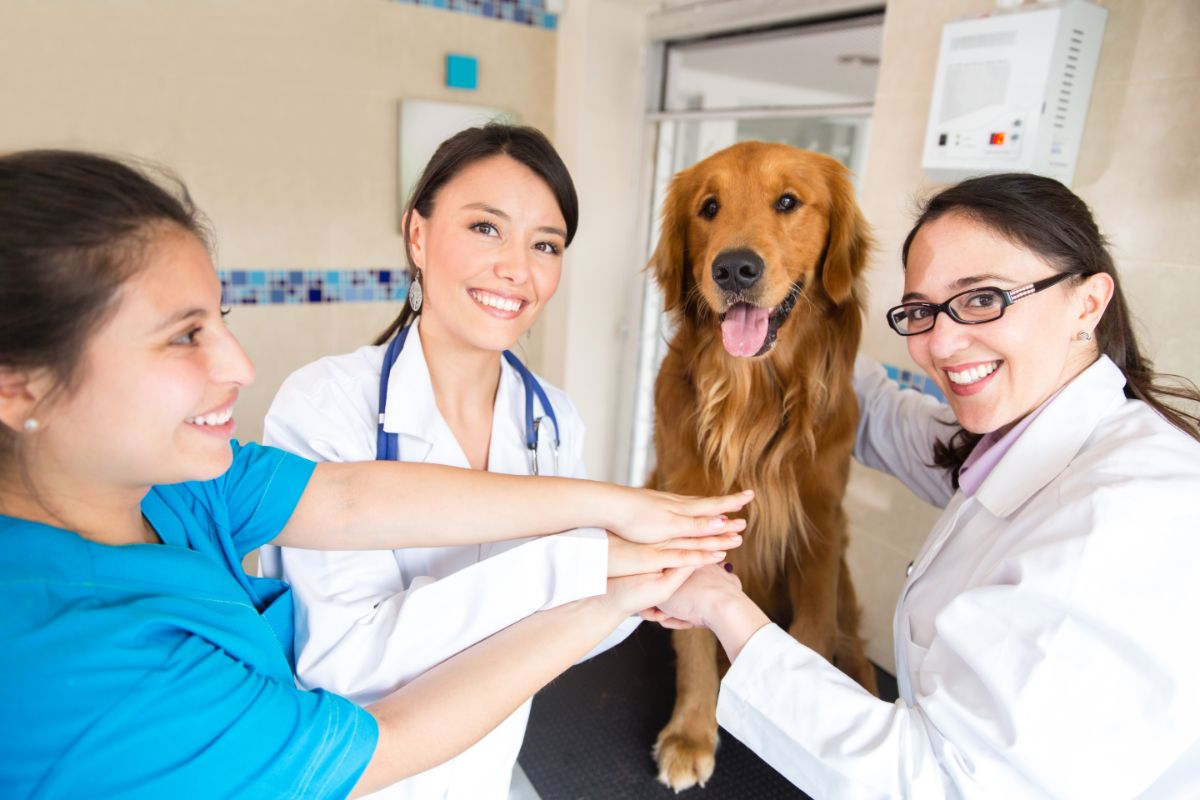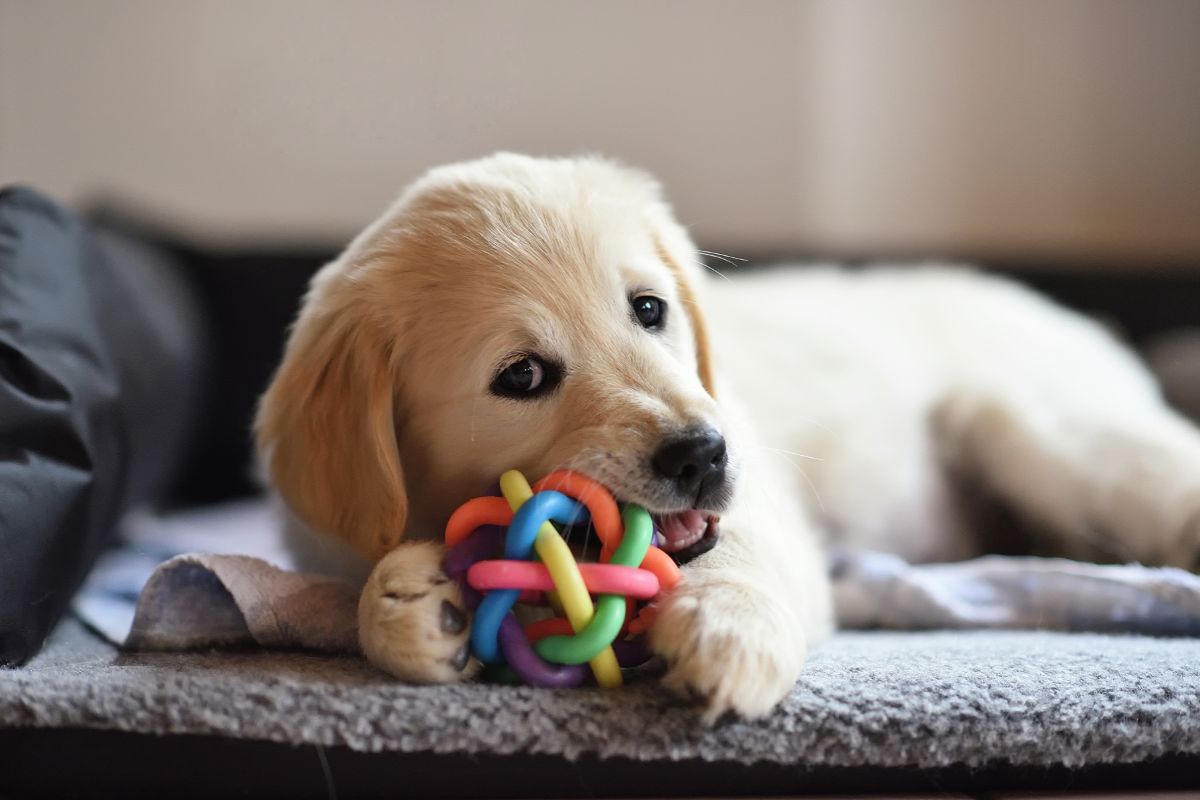So, you’ve got your adorable little pup and have bought a crate to use for training. But what exactly is crate training, and where do you start?
In this guide, I’ll share all my tips and tricks for successfully crate training your Golden Retriever.

What Are The Benefits Of Crate Training A Golden Retriever?
Firstly, let’s backtrack. What are the benefits of using a crate?
Contrary to what some will have you believe, crates can become a safe space for your pooch – both physically and emotionally.
As long as the crate is appropriate in size (big enough for your pup to stand up, turn around and lie down in) and has what your dog needs to make it into a little safe haven, the crate can often become somewhat of a “den”.
Many dogs who have a crate may choose to go there for some quiet time away from their paw-rents – we know how annoying humans can be!
On a physical level, the benefit is obvious.
Particularly when they are pups, our furry best friends can be prone to destroying anything and everything they can sink their teeth into.
Whilst your favorite pair of shoes could be what catches your dog’s eye, so could an electrical wire that they can play tug-of-war with.
The effects of this could be devastating.
Crates can help to maintain your dogs’ safety when you are not able to supervise them whilst they are still learning what to do and what not to do.
As I mentioned, a crate can be perceived by your dog as its den. Therefore, when housetraining your pup, crates can be helpful.
Dogs will often not want to soil their living space, so using a crate whilst training can help to encourage your pup to control its bladder or bowels.
This leads me to another benefit of using the crate.
It can help to create a routine for your furry pal. If your dog knows what happens when they go into their crate and what often happens when they come out, they will start to adapt and get used to a routine around that.
With the above in mind, the crate should never be an area that is used as a punishment.
It’s your dog’s “den” and should be an area that your pooch feels comfortable in, not one where your dog feels “forced” into when doing something wrong.
Crating for safety and crating for punishment are very different.
You will want your pup to carry positive associations with the crate, not be fearful of it. If it becomes an area your dog fears, that will make life harder for both of you.
Something that must be highlighted is that your dog should never be left in the crate for long periods of time without exercise or breaks.
Again, this comes back to comfort.
Your dog should feel comfortable in its crate, and being locked in without interaction with others, exercise, or being able to go to the toilet can make your dog uncomfortable and create an environment that may have unpleasant effects on your pup.
Crate Training Your Retriever
Now that we’ve looked at some of the positive aspects of using a crate and how not to use a crate, we can look to learn how to crate-train your retriever.
It’s important to emphasize, with all of the steps below, that patience and consistency are key to the success of crate training.
Choosing The Right Golden Retriever Dog Crate
The first step in crate training is to choose the right size crate.
Many brands will offer crates ranging from XS to XXL (or even bigger) to accommodate different breeds.
Many people will opt for a smaller crate when the dog is a pup and later upgrade it, but this can be more pricey.
If your pup is happy, and you can make the den super snuggly, the best option is to choose a crate that will be suitable for your dog’s adult size and weight and just make it seem smaller by cornering off a section at the back, or by adding plenty of blankets and things to snuggle.
Golden Retrievers are classed as medium to large dogs, so you need a crate to suit their full adult size. A 42″ crate is usually a safe bet.
Making The Crate Comfortable
As this is an area your dog should feel comfortable in, make sure you make the area cozy.
Add some blankets for comfort and warmth as well as some indestructible toys for your dog to enjoy – and I’m sure your dog wouldn’t be opposed to having a few treats in there, too, for good measure!
In fact, the latter two can be easily combined by purchasing a toy such as a Kong that you can fill with treats and peanut butter – this can be a great way to help your pooch to associate the crate with being a “positive” area.
Gradual Introduction
It’s good to place the crate in an area where your dog usually spends a lot of time (or you’d like them to).
Family areas are good for this, or a room that adjoins a family area if this is not possible.
The door should be left open so that your pooch can have a mooch whenever their little heart desires!
This is important as, again, you don’t want this to become a place that your dog feels forced into.
The more gentle of an introduction your pup gets to the crate, the more likely that your dog will adapt to it with less anxiety for all involved!
Positive Reinforcement
Especially in the early days, having the crate in a family area also has the benefit that you can reward your pup for going in.
So, even if your little pal is just going in for a sniff around, be sure to have some treats to hand and praise them.
Getting your dog to associate this area with positive experiences is one of the most important steps to crate training.
Retrievers love snacks, so treats combined with cuddles and praise are going to really get them wanting to go into their little haven.

Mealtimes
I don’t think we’ve mentioned this enough yet, but retrievers love food.
What better way to create a positive experience than to let them dine in their crate?
Again, this can be done gradually.
You can begin by having your dog’s food near the crate, and as their confidence with the crate increases, you can move it closer to the crate, eventually putting it inside the crate when your dog seems more comfortable.
As dogs can get defensive around their food, this can also be a great way of maintaining safety for any other pets or even children in the household.
Whilst retrievers are known to be family dogs, they adore their food and should be left in peace to eat.
Closing The Door Gradually
Once your dog seems to be quite comfortable with the crate, you can close the door for short spells either during mealtimes or with a toy and some treats.
As your dog becomes more comfortable, you can close the door for gradually longer periods of time while you’re at home if they are playing with a toy.
Of course, if it’s during mealtime, you would want to open the door as soon as they finish to encourage them to go potty.
If you find your dog is whining or barking, as tempting as it can be to try to “hush” them, it’s better not to give your attention to this.
Instead, once they are quiet, give them a treat and praise them. This will encourage calmness.
Leaving The House For Short Periods
Once the above steps have been taken, and your dog has managed gradually longer periods of time while you’re in the house, you will want to allow your pooch time to settle into their crate whilst you are out of the house.
Again, you want to make this a pleasant experience, so the best way of doing this is to leave treats and toys that occupy and distract your dog.
Some people will feel concerned about this step, and many pet parents choose to set up a camera to see what their furry friend is like when they’re out of the house.
This has benefits in that if you can see what your dog is doing when you’re not there, it may give you ideas for how you can make this an even more comfortable experience for them.
However, some pet owners may find they worry even more with a camera – there is really no right answer here.
Once you’ve succeeded with short periods, you can start to leave the house for longer periods – within reason, of course.
The Final Woof
Crate training is a great way of helping your dog adjust to family life and daily routines. It gives them a safe space to call their own and can aid in potty training.
It can also prove to be a safe space when your Golden is feeling uneasy or needs a break from the hustle and bustle of the house.
Choose a crate that is a suitable size, make it super comfortable for your pup, and remember to introduce them to this space gradually.
Frequently Asked Questions
A 42″ crate is usually suitable for a golden retriever.
Once your pup is used to the crate, you can use it at night (for up to 8 hours).
This will really depend on the pup in question, but as smart dogs, you can usually expect to crate train a Golden Retriever fully after a few weeks of commitment.








